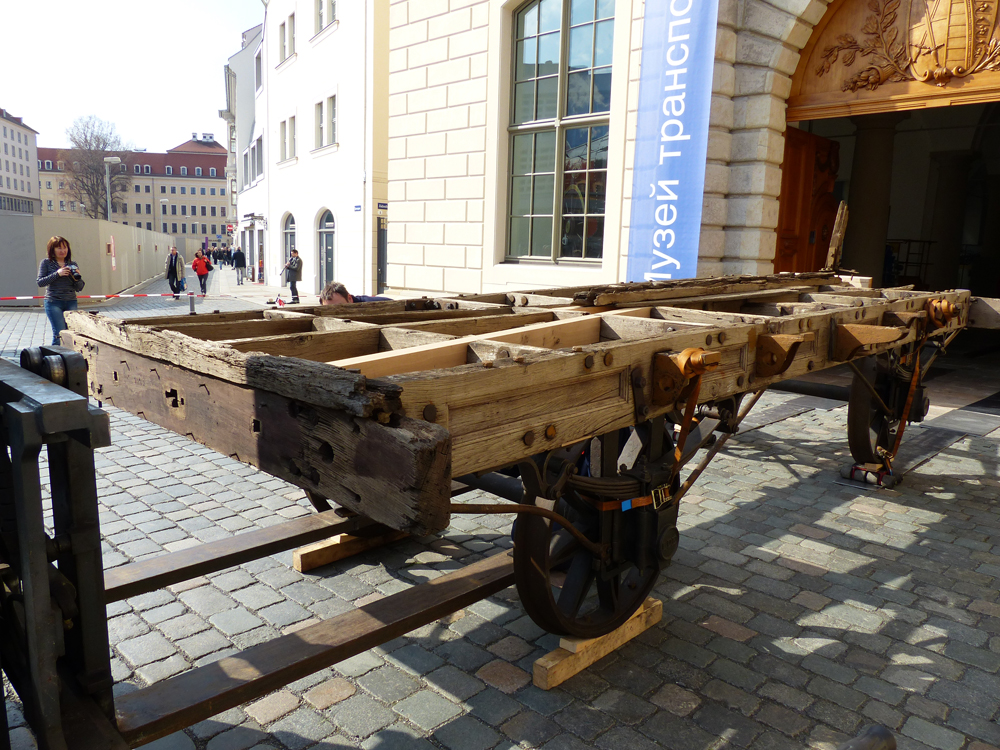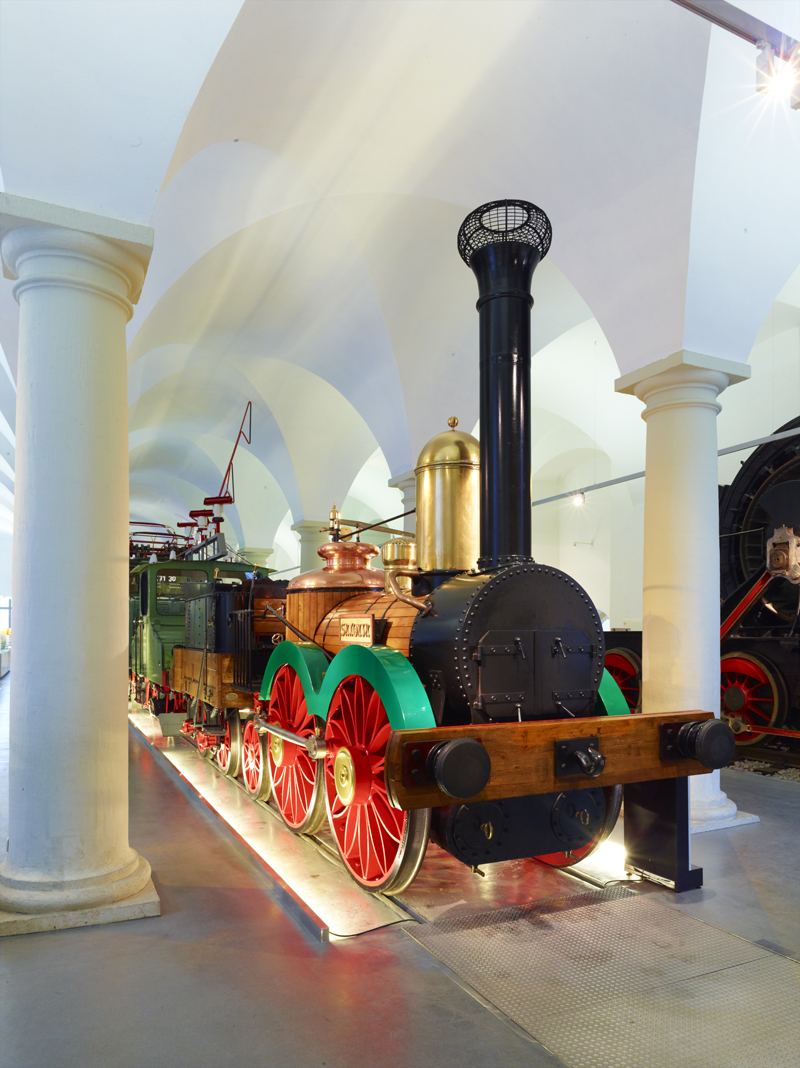On 8 April 2014 the special exhibition “Germany becomes mobile” will open at the Dresden Transport Museum after a preparation time of nearly two years.
It intends to take a new look at the first long-distance railway in Germany, the Leipzig-Dresden line, which opened 175 years ago on 7 April 1839. This railway line marks a milestone in the history of mobility in Germany, because it provided affordable transport for hundreds of thousands of people.

While the buildings and line of this 115 km long railway have been the focus of many
exhibitions and scientific research in the last 50 years, our exhibition focuses on the
men who built, designed, financed, planed and ran the line: engineers like Theodor
Kunz, the directors of the company like Gustav Harkort or Wilhelm Seyfferth, the
designers of engines and wagons like George Stephenson and Thomas Clarke Worsdell
and the workers as well as the passengers.
It centers on three main objects: first of all, the last remaining wagon of the Leipzig-
Dresdner Eisenbahn, which serviced both the LDE and later the Royal Saxonian State
Railways and was then bought by Villeroy & Boch. Since 1954 it is part of the collection of
the Transport Museum of Dresden and was reconstructed for this exhibition.

Image courtesy of the Dresden Transport Museum
Second, the”Saxonia”, a replica of the first working steam locomotive built in Germany, which is part of our permanent exhibition. The replica was built in 1989 for the 150th anniversary of the LDE.

Image courtesy of the Dresden Transport Museum.
Last but not least there is “Coppernob” built by Edward Bury in 1846. The loan of “Coppernob” from the National Railway Museum is not only a sign of great co-operation between our two museums; it’s leaving England for the first time gives us a great opportunity to show the transfer of technology from England to Germany. Its twin, Rothwell’s “Comet”, was the model for the first working
locomotive built in Saxony in 1838 – Johann Andreas Schubert’s “Saxonia”.
Sven Bracke
Curator at the Dresden Transport Museum
See how Coppernob was prepared for the move here: